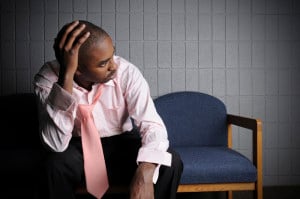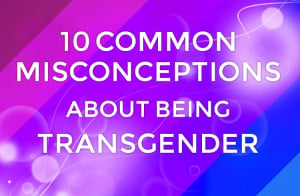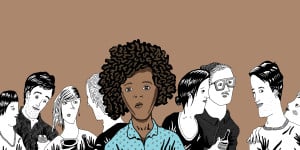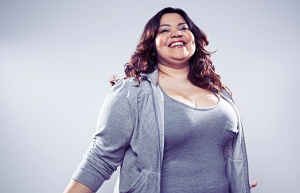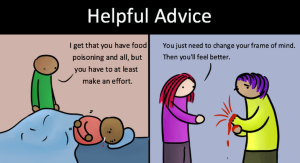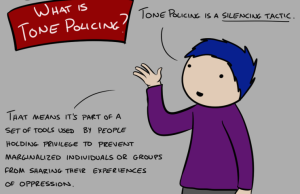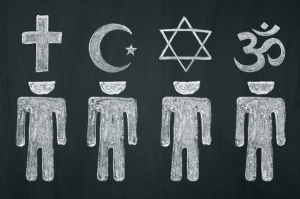Imagine being so frozen with fear and dread that you refuse to get out of your car.
Even though you know you’re sick, you know as soon as you step out that people will see your lack of a wheelchair or crutches and do a double take of the handicapped spot you’ve parked in.
The sad truth is that unless your disability is blatantly physically obvious, able-bodied people assume you’re just like them.
Yet the truth is that about 96% of us disabled people have what are called an invisible illness. And because they’re invisible, people assume we’re faking all the time. And the scariest thing is that many painful chronic illnesses go without acknowledgement or recognition from society, even within disability circles.
An invisible illness can be mental, physical, or both. There usually aren’t too many outward signs of said illness, which is why the phrase “but you don’t look sick” is both widespread and completely missing the point.
Take me, for instance.
I look like a rather healthy and young person. And yet, I have maybe ten invisible illnesses. Starting with my very first menstrual cycle, I spent two weeks out of every month doubled over in pain, wanting to kill myself, being told it was all in my head.
I grew older and eventually the intense pain spread to the rest of my body. And as the sexual and emotional abuse worsened, so did my mental health. Eventually I became a bit of a shut in.
Then I began receiving worse and worse diagnosis of chronic – invisible – illnesses.
The most debilitating ones are endometriosis, Polycystic Ovarian Syndrome, Premenstrual Dysphoric Disorder, and fibromyalgia. I don’t suffer as much from my Post-Traumatic Stress Disorder anymore, but I do still deal with secondary depression and anxiety.
Most of these are things people have never heard of, or ones that people didn’t realize could apply to people like me.
Most people lack the information or experience to empathize with our struggles. So here are six experiences you may never have realized people with chronic illness have to deal with.
1. Chronic Illness Has Unexpected, Horrible Side Effects
Unlike popular medical shows like House, many people with an invisible illness can actually have more than one. It’s like winning the world’s worst lottery.
The first illness I was diagnosed with was endometriosis. Then the doctors realized I had PCOS (polycystic ovarian syndrome). Then – due to my stressful life circumstances, my traumatic history of sexual and emotional abuse, my intense work schedule, a host of other sad shit, and the fact that my body was so used to being in pain – one day I woke up in an immense amount of pain that simply never went away.
Fibromyalgia: the nervous system literally operates on 100%, constantly engaging the flight or fight response until all it can do is turn on itself, electrocuting you from the inside, causing body-wide muscle aches, disrupting your temperature, making all of your senses even more sensitive, and leading to chronic fatigue and brain fog.
That’s not all it does; that’s just the beginning.
Yet this is the actual slippery slope of chronic illness. If you have one already, you’re more likely to develop others.
I didn’t just develop full-blown fibromyalgia; I also found myself depressed and anxious from dealing with each of my physical illnesses and painful history. My PCOS alters my hormone levels, which leads to cyclic depression that matches my menstruation. Add that to the PMDD, and you have my very many suicide attempts.
Pregnancy and menstruation are dangerous for me in ways most people don’t realize. When I’m unable to receive the care I need and when others belittle or don’t understand what I’m going through, it can lead to isolation, depression, and anxiety.
All of my symptoms worsen when life circumstances are also stressful. In societies where simplicity is an ideal, the complexities of living with a chronic illness that no one else can see can make life that much harder.
Sometimes, it can even lead to death.
When you don’t realize that it’s never just one thing affecting our health, but everything, then you can better understand our fatigue, our depression, why we say we can’t do certain things.
You’ll understand that pressuring us about work, education, or other “normal” activities only adds to our stress, which makes every part of our illness worse.
2. Treating People With Chronic Illness Like They’re ‘Faking It’ Is Really Harmful
That’s not a hyperbole.
My misdiagnosis with Bipolar Disorder resulted in my being medicated with a substance I was highly allergic to. I ended up having seizures after the first dose. It scared me so much that I didn’t seek any sort of treatment for a couple more years.
Meanwhile, my endometriosis got worse, eventually leaving me unable to attend classes or work. I was bedridden, without the energy to fight for my place in college, and unable to explain to any of the administration why I was ill.
Without the understanding of how my health affected my ability to attend, I had no recourse or strength to fight back when they decided to end my time at college. Rather than working with me on a solution, I ended up with a mountain of debt, no degree, and no income.
Many people with chronic illnesses are given options that are difficult, irrelevant, or downright impossible for us.
Our actual capabilities aren’t taken into account. And people figure, if healthier people can do it, we should be able to.
But for those of us with invisible illnesses, being treated appropriately can mean the difference between life and death. Some of us are given the wrong medical care (or worse, unsympathetic care).
This lack of acknowledgement occurs in many ways. People don’t think you really need that handicapped seat on the bus. They report you for having a handicapped sticker when clearly you can walk. They fire you from your job because they’ve never heard of your illness.
Many of us are accused of faking our illnesses when we need to ask for certain things: like asking that places be fragrance-free, needing to leave a loud party, or needing to take three naps in one day.
People tend to try to help when we don’t actually need it and then fail to offer assistance when we really need it. Paying attention, learning about illnesses, and listening to our experiences goes a long way to ensuring we can get the help we need.
Each chronic illness manifests in different ways. Sometimes we’re capable of certain things and other times we’re not. Checking in with us at each step along the way – for any activity – is best. Doing your own research on our conditions will give you a better understanding of our needs. It’ll also help us to save our spoons for getting through our day.
In many cases, it’s healthier for us not to push through our pain. It’s better not to force ourselves into uncomfortable situations.
And it certainly won’t help anything to add on stress (no matter how little) to our day.
In the end, it’s better not to make assumptions that make our days and lives harder.
3. Not Understanding the Difference Between Laziness, Leisure, and Need Prevents Care
No one helps, and everyone tends to be skeptical about invisible illness, because they assume laziness is more likely. Especially here in the United States, where being weak, injured, or otherwise unable to work is viewed as despicable.
If we are each the masters of our own fate, then no one should have to take care of us and nothing should be given to us for “free.”
Just try going through the social security process or trying to keep a job with an illness that leaves you unable to move or function for days, for weeks, for months.
Worse than that, many of the services disabled people need are viewed as luxuries, as leisure activities. If you’re rich or well off, it’s acceptable to get regular massages, to take vacations, to have housecleaners and in-home nannies. You might be made fun of for it, but it’s not considered unusual.
Yet when my fibro keeps me from doing basic chores or shopping or dealing with strict work schedules, I am looked upon with scorn and disbelief.
Most people have no idea what it’s like to be chronically ill. They take their health for granted. They view it through their lens instead of through our eyes.
And of course, if they did what we did – or, rather, what little we’re able to – it would be because they were being lazy or seeking out a luxury.
In-home care, service animals, and pampering activities are often necessities for people who have painful chronic illnesses. It’s the only way to lessen our symptoms and be able to have enough spoons (energy) left over to take care of ourselves.
We are not and never will be healthy.
But we’d like to get as close as we can. That involves those services and relaxation activities that everyone else takes for granted. Because while we have some “good days,” that doesn’t mean we’re actually feeling better.
Which actually leads right into the next problem.
4. The Pain Scale Is Useless to Us
There’s that pain scale, numbered one through ten, with increasingly dour expressions on the faces of the metaphorical patient. But the problem is that this scale is based on being healthy with a temporary illness. It’s not properly designed for those who never have a day pass without being in pain.
Those of us with chronic illnesses are masters of coping. We learn to smile through the pain and anguish, we conserve what little energy we have by not bothering to cry, and we count out our spoons to figure out how much we can get done in a day.
Part of the reason it’s so hard to believe that many of us are truly sick is because of the ways we cope with our pain. It’s more than most people will ever experience, yet we have no choice but to bear it.
We only break down when we have the spoons to break down. Even our doctors become lightweight suspicious or reluctant when we come across as cheerful even while our bodies feel like they’re on fire.
There’s this meme that went around showing an “improved” pain scale for people with fibromyalgia. The face was still smiling all the way up to ten. And that’s the reality. If we make a sour face or actually cry, it means the pain has gone beyond the scale itself.
It also fails to account for all the different types of pain we experience. There’s the saying that the Inuit have many names for snow; well, I have a shitload of names for pain.
But until there’s a more commonly understood, nuanced key for pain, there will be a disconnect between patients and doctors, loved ones and family. Medications or help that are sorely needed might be passed over because of a misunderstanding about how pain affects people differently.
You can provide better care to your loved ones if you can grok that just because they’re smiling doesn’t necessarily mean they feel better.
Talks can become quite ineffective without proper language or tools. And right now, treatment based on pain scales is incredibly ineffective.
5. The Absence of Invisible Illness in Accessibility Talks is Problematic
Speaking of ineffective, even those who are active disability advocates fail to take into account the intersections of disability with other identities and realities.
Even certain types of disability are pushed to the margins. The most common invisible illnesses spoken of are mental disorders like schizophrenia and bipolar disorder, along with the neurodivergent experiences of autistic people.
But this means that anyone without a popularized chronic illness is marginalized within both media and disability movements.
There are plenty of disabled people saying they wanted to be treated like they’re normal, but for those of us with chronic pain, that’s the opposite of a solution. Treating us like “normal” people, or even other disabled people, will absolutely make things worse.
Recently, I attended a disability festival. It was the most disability-inclusive environment I’d ever been in, with sections for the deaf, those with low vision, those in wheelchairs, and more. Yet even they failed to take chronic pain sufferers into account: the chairs were rigid and hard. I nearly lay down on the floor to relieve the pain those chairs caused.
Until you can experience the pain of sitting, the pain of a breeze, you have no idea what chronic pain can do to a body.
6. Everyone, Regardless of Age, Can Be Invisibly Disabled
All of these things are extremely problematic because the chances are high that everyone living will have an invisible disability eventually. As with everything, the longer you live, the more chances you have to experience something.
However, just because age is correlated with illness doesn’t mean that age alone causes illness.
Certain illnesses are just a matter of time and chance, yet health is treated as a static reality and youth as invulnerability. If you only view illness as an age-related event, you can’t fully advocate or recognize the millions of children and young adults who are afflicted.
Even doctors who know I have chronic illnesses have still referred to me as healthy, as if my lack of years automatically cancels out the fact that some days I’m about as mobile as a corpse.
Just because some of us are “young” doesn’t automatically make us healthy.
It erases our experiences and makes us feel even more useless when compared to other people our age. We aren’t capable of the same things the rest of our age group is, and it hurts to be reminded of that.
These Problems Arise From the Illusion of Health
Health is assumed to be the default state, when in actuality, illness is much more likely and more common than realized.
As a chronically ill person, health is just a myth to me – some fairy tale. I don’t know how many others feel that way, but I bet it’s a lot.
Health, as commonly defined, is unattainable for those of us with painful chronic illnesses. Yet that doesn’t mean all is lost. Become a better access ally.
Lessen the impact these problems have by realizing that chronic illnesses affect the entire being: heart, mind, body, and soul. They change the ways we can move in the world, so have consideration for those who have no visible signs of illness. Our lives depend on it.
Don’t assume that we’re lying when we tell you we can’t do something. Instead, propose an alternative that helps us. Ask what you can do around the house or offer to give us a massage.
These are just some steps toward building communities of care.
Though we may be smiling and laughing, that doesn’t mean we’re not in pain. It doesn’t mean we’re healthy.
We are diverse as any other population, and we deserve information tailored to our needs and desires just as much as you do.
Keep us in mind, even though our struggles are invisible to you.
[do_widget id=’text-101′]
Michón Neal is a Contributing Writer and Social Media Associate for Everyday Feminism. Ze has so many identities they won’t fit here. Michón writes a mix of scifi, fantasy, erotica, and autobiography called cuil fiction about unique people in unique circumstances, with characters running the gamut of non-monogamous and LGBTQIA+ spectrums. That’s right: queer and poly fiction! Ze is currently working on the Cuil Effect project, a ridiculously long tale about healing, absurdity, and all the different ways people interact. You can find more details, sneak peaks, links, and absurdity on hir blog, Shadow in the Mirror. Michón also invented the only class on Intersectional Non-Monogamy and is the co-editor for Postmodern Woman.
Search our 3000+ articles!
Read our articles about:
Our online racial justice training
Used by hundreds of universities, non-profits, and businesses.
Click to learn more
Most Read Articles
- « Previous
- 1
- …
- 30
- 31
- 32






